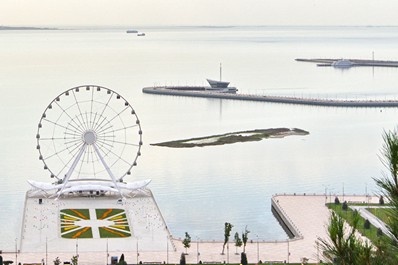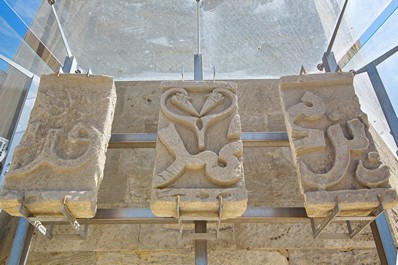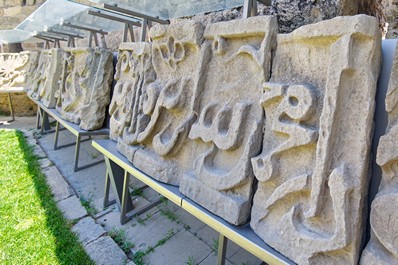Bayil Castle near Baku
This mythically sunken city is surrounded by an aura of secrets, legends and enigmas. Bayil Castle was once one of the most important structures for defending Baku. Now visible only as a small island in the bay off the shore of Baku, Bayil Castle was famous for centuries, then lost for centuries.
However, unlike Atlantis, the existence of Bayil Castle is unequivocal. In 1232-1235 Shirvanshah Fariburz III, in an attempt to protect Baku from the sea, began to construct a stronghold which later became Bayil Castle, also known as Sabayil Castle, Shakhri Saba, Shakhri Nau, "submerged city", or "Bayil Stones".
Bayil Castle was constructed under architect Zejnaddin ibn Abu Rashid Shirvani. The structure is similar to an extended irregular rectangular (180 х40) . The foundation shape was exactly the same as that of the island's coastline. Fortifications of the castle were 1.5-2 m thick with 15 towers 3 of which were round, and 12 - semicircular. During excavations, the foundations of 9 buildings were found. The western wall is adjoined with the destroyed platform - the basis of the central tower which was used simultaneously as a watchtower and a beacon. Historians also believe that there was a fire-worshippers' temple.
Along the entire upper part of the Bayil Castle ran a strip of inscriptions in Arabic and Farsi, together with the images of human faces and imaginary animals. The overall length of the inscription is about 400 meters. Among the decrypted parts of the inscription are three fragments with the construction date - the year of 632 AH (1234-1235 CE), and the name of the architect. Further in the text is the genealogy of Shirvanshahs Mazjadids dynasty, shown in the images of crowned busts. The figures of various animals designate the years of Shirvanshah rulers.
These inscriptions have no analogues in the Middle East; it was the first time that pictures of humans and animals were found on a Muslim monument. Unfortunately, the Bayil Castles' upper part is completely destroyed; only the bottom part of the walls and towers has survived. The inscriptions today are held in the courtyard of the Shirvanshah Palace.
In 1306, as a result of the strongest earthquake ever in the south of the Caspian Sea, the sea level rose and Bayil Castle sunk under water. From the early 14th century up to the early 18th century, the structure was under the Caspian Sea. In 1723 due to dropping sea levels in the Caspian Sea, the top of the tower appeared above the water. Today, only a small bit of the fortress is visible from the coastline or viewpoints.




